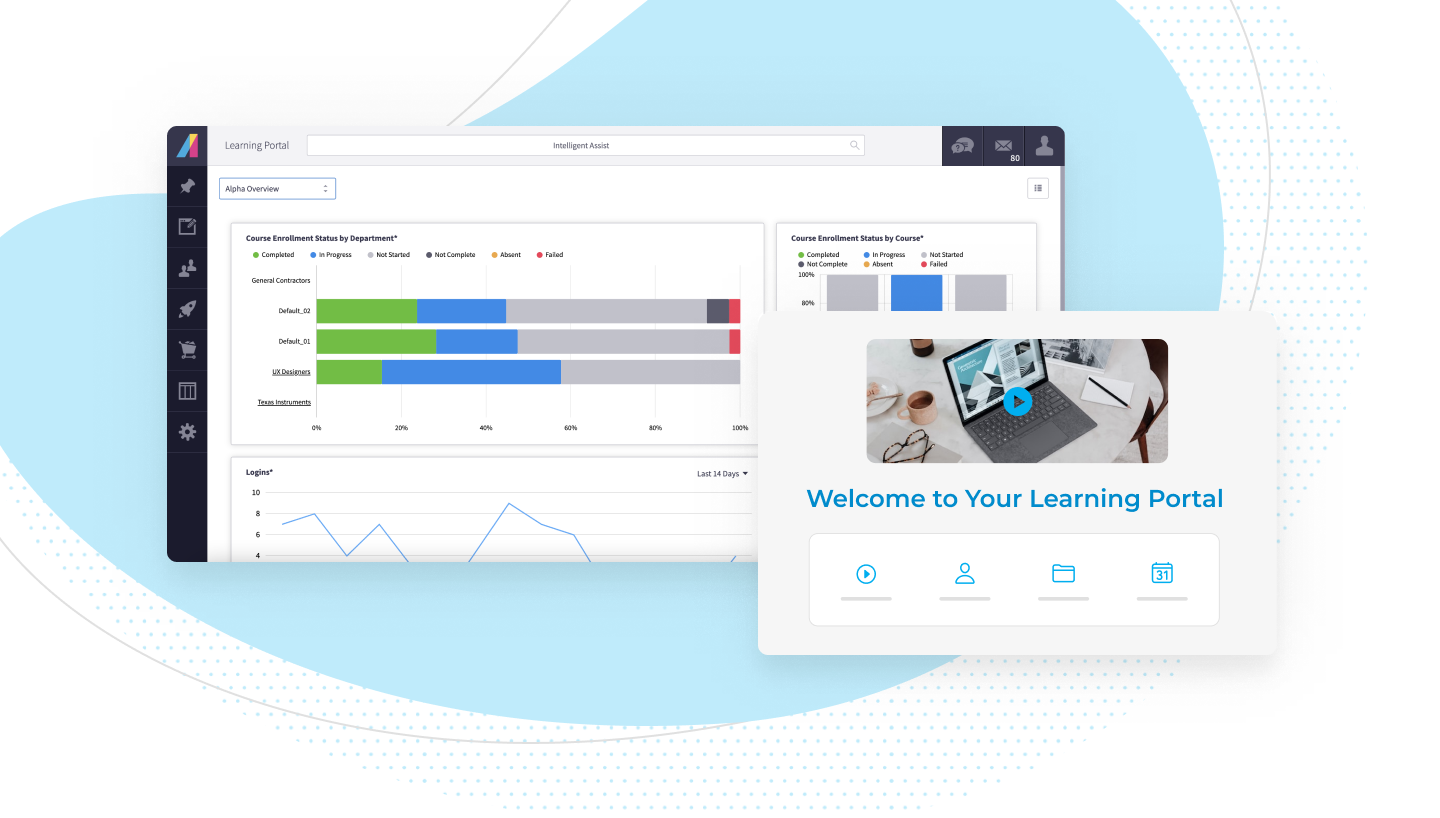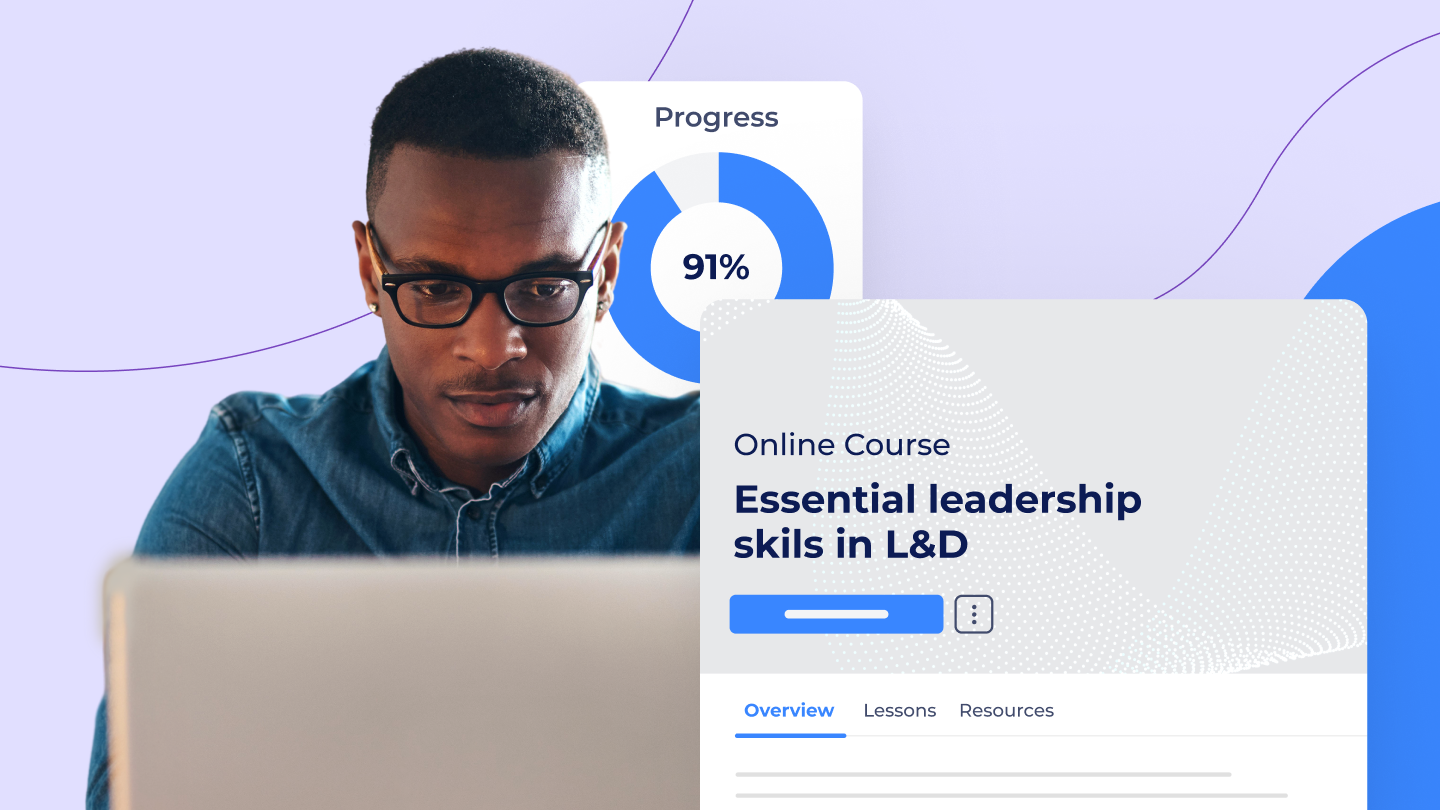Microlearning, an eLearning mainstay, is focused, mobile-friendly and engaging to learners. And it works. Its brief format, coupled with microlearning best practices like continuous and personalized training, yields results quickly.
With frequent short training sessions, learning and development teams can study changes in key performance indicators (KPIs) over weeks or months, rather than looking only at annual training results. Analyzing learning KPIs alongside business KPIs allows them to gauge whether and how well the microlearning works—and figure out how to improve it.
Microlearning KPIs for learners
Learners like to see their progress toward learning goals. Microlearning KPIs that mark increased mastery include levels, badges, points and progress meters. Changes provide tangible evidence of improvement; it can also be fun for teammates to compare progress, engage in friendly competition and win prizes.
Measuring training progress matters to learners primarily if they can apply new knowledge to improve job performance or increase their chances of getting a promotion. Business KPIs that might lend them—and their managers—insight into how their performance is improving include sales numbers, social media engagement, customer comments and referrals, increases in repeat orders, and decreases in canceled orders. A reduction in incidents following safety training is a measure of training effectiveness that benefits learners and organizations.
Microlearning KPIs for L&D
Tracking learners' progress is valuable to L&D, too; if learners' knowledge is not increasing, the training is not effective. Gains in knowledge are easily measured with recall and application questions within the microlearning.
Learners are unlikely to engage with content that is not relevant or useful. That's why training engagement KPIs, as well as learner feedback, provide essential information for eLearning developers. L&D can measure how many learners engage with microlearning, how often, for how long and whether they engage voluntarily or do only the required minimum.
Microlearning best practices encourage narrowly focused content and targeted delivery so that individual learners spend time studying only what they need to know. Continuous microlearning offers L&D teams frequent opportunities to check in with learners and get their feedback on content quality and relevance. Frequent short training sessions also make it easy to gather and analyze data that helps developers improve content.
Microlearning KPIs for managers
Training exists to improve the performance of both individual learners and the entire organization. Each organization will have a different definition of what that means, whether it's increased sales or social media engagement, reduced safety incidents, or something else. Whatever the KPIs that matter most to your organization, following microlearning best practices can help.
Collecting data on frequent microlearning sessions, comparing it with performance data, tweaking the learning and looking for improvements is a virtuous cycle that can repeat throughout the year. There are several ways managers can gauge training impact, including:
- Compare engaged learners' job performance with that of employees who haven't done training
- Chart changes in workers' performance or efficiency throughout a microlearning campaign
- Track the number of positive customer comments or reviews, the number of complaints or the volume of returns versus repeat orders, and compare with pretraining numbers
KPIs show microlearning ROI
Studying learning and business KPIs helps L&D teams determine whether training is effective. Microlearning offers a quick turnaround for using data to improve content—which results in better business outcomes.
Microlearning best practices, along with built-in data collection, provide L&D teams with the info they need to succeed. At the same time, learners can see their progress, which motivates them to engage—and management can see the real ROI of their microlearning investment.







